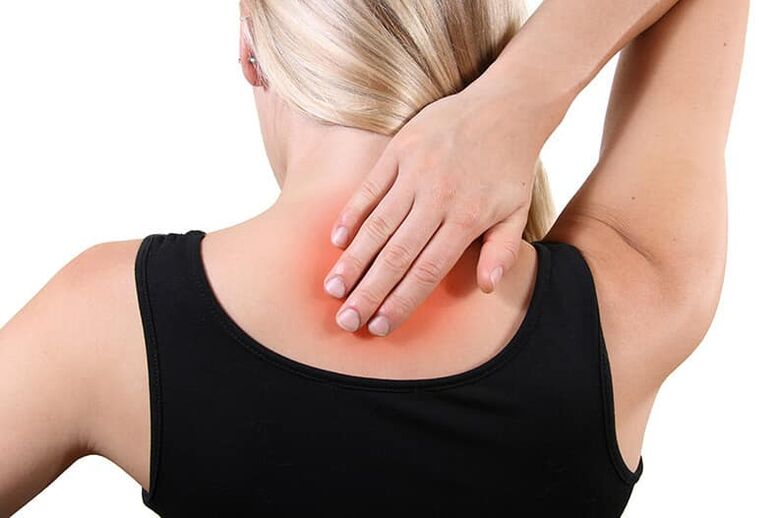Spinal diseases can be very unpleasant. In cases where they affect the cervical spine, the spinal cord and brain may have complications. Cervical osteochondrosis often causes headaches, changes in internal organs, and circulatory disorders.
Doctors divide the development of cervical osteochondrosis into three stages. In the first and second stages, degenerative dystrophy changes (drying, flattening) of the intervertebral disc. In this case, the structure of the disk itself will not change.

In the initial stage, the symptoms of the disease have just begun to appear. In the second stage, their performance is more specific, and it is aggravated with head movement, severe fatigue and stress. The third stage is the appearance of the pathological process of the intervertebral disc (osteophyte). It is observed that the fibrous annulus ruptures, which leads to the prolapse of the nucleus of the intervertebral disc and the formation of herniated cervical spine. In the third stage, continuous observation of pain, difficulty in head and shoulders, and inability to carry out standard home operations.
symptom
One of the main symptoms of cervical osteochondrosis is pain at the back of the neck, which is caused by the compression or inflammation of the nerve roots. In this case, the pain usually radiates to the neck area, shoulders, forearms, and under the shoulder blades. The pain can spread to the left or right hand and cause numbness in some fingers.
In addition to pain, the characteristics of cervical osteochondrosis are:
- dizziness,
- "Flies" are in front of you,
- Hearing loss
- Decline of memory
- Headache and headache in the back of the head and temples.
If the disease persists for several years, it may increase vascular atherosclerosis and circulatory encephalopathy (severe decrease in mental capacity).
With the circular movement of the head, patients with cervical osteochondrosis usually hear a characteristic crunch.
the reason
The main cause of cervical osteochondrosis is incorrect sitting posture. In addition, the symptoms of this disease are also prone to appear when the head is tilted back during construction and maintenance work in a forward-leaning state during daily operations. This is because too much pressure on the neck will change the structure of cartilage tissue, resulting in pathological changes of the intervertebral disc. In addition, the causes of cervical osteochondrosis may be calcium metabolism disorders in the body, genetic factors, trauma, hypothermia, increased exercise volume, etc.
treatment
Only by completely changing the lifestyle, continuous prevention and hydrotherapy, can it be possible to completely cure and prevent the redevelopment of cervical osteochondrosis. In practice, few people can do this.
In the first stage of the development of osteochondrosis, patients are usually helped by conservative non-drug treatments. At the same time, correct posture, pay more attention to the correct equipment in the workplace, and often interrupt simple physical therapy exercises. Swimming, increased physical activity, and intake of vitamin and mineral complexes can have a positive effect on the entire musculoskeletal system.
In the case of starting treatment in the second or third stage of the disease, the main task is to relieve pain. In advanced cases, surgical treatment can be prescribed to stabilize the damaged vertebrae, but this situation is individualized, and modern physical therapy usually helps to avoid this.
Physiotherapy method
In cases where medications are contraindicated or do not show the necessary positive effects, the physiotherapy methods of classical and alternative medicine are used to treat cervical osteochondrosis. First, they are designed to eliminate muscle cramps, inflammation and pain.
Reflexology.The essence of this method is to stimulate the biologically active spots by introducing a special fine needle into a certain depth. The procedure is painful and helps relieve spinal pain. A complete reflexology course includes several courses.
massage.Classic method to eliminate muscle pain and improve blood flow.
Shockwave therapy (SWT).It can restore blood flow and eliminate osteophytes, restore the normal structure of cartilage tissue. A positive effect was observed after 1-2 courses of treatment. Shockwave therapy usually has up to ten procedures and can be prescribed as part of a complex therapy.
physiotherapy.Some specific daily exercises help strengthen the muscles of the cervical spine, thereby reducing the pressure in the area. Exercise therapy is suitable for all stages of the disease and is also a preventive measure. A set of such exercises might include:
- Turn your head to the sides;
- Tilt the head back and forth;
- Raise your shoulders
- Alternating tension of neck flexors and extensors, fixed head position.
The exercise must be repeated 5-7 times. The duration of the course is 15-20 minutes.
A set of exercises is always selected by the physiotherapist, taking into account the specific conditions of the disease and the patient's condition.
Food and lifestyle. Whether it is during conservative treatment or after surgery, it is recommended to eat more foods rich in calcium and vitamins, correct habitual posture and general posture, and orthopedic pillows and mattresses.
prevention
In order to avoid hypothermia and infectious diseases, it is necessary to stay in one place for a long time in front of the computer. If you are going on a long journey, please use a cervical spine support cushion that reduces muscle tension. For daily sleep, it is recommended to use orthopedic pillows and mattresses that can ensure the correct position of the head.



















